On the very first evening of February, the Chhobi-o-Ghor Art Gallery opened its doors to reveal an acute study of India’s social landscape in Mihir Kayal’s solo exhibition ‘Three Colors’. In a striking departure from his usual style, Kayal brings us a sequence of dream-like paintings on canvas, colored in varying shades of blue, red, and brown. When asked about what informed his choice of these three colors, the artist steps back and smiles. He says that they simply happen to be three of his favorite shades. The rest of the talking, he assures us, will be done by his art.
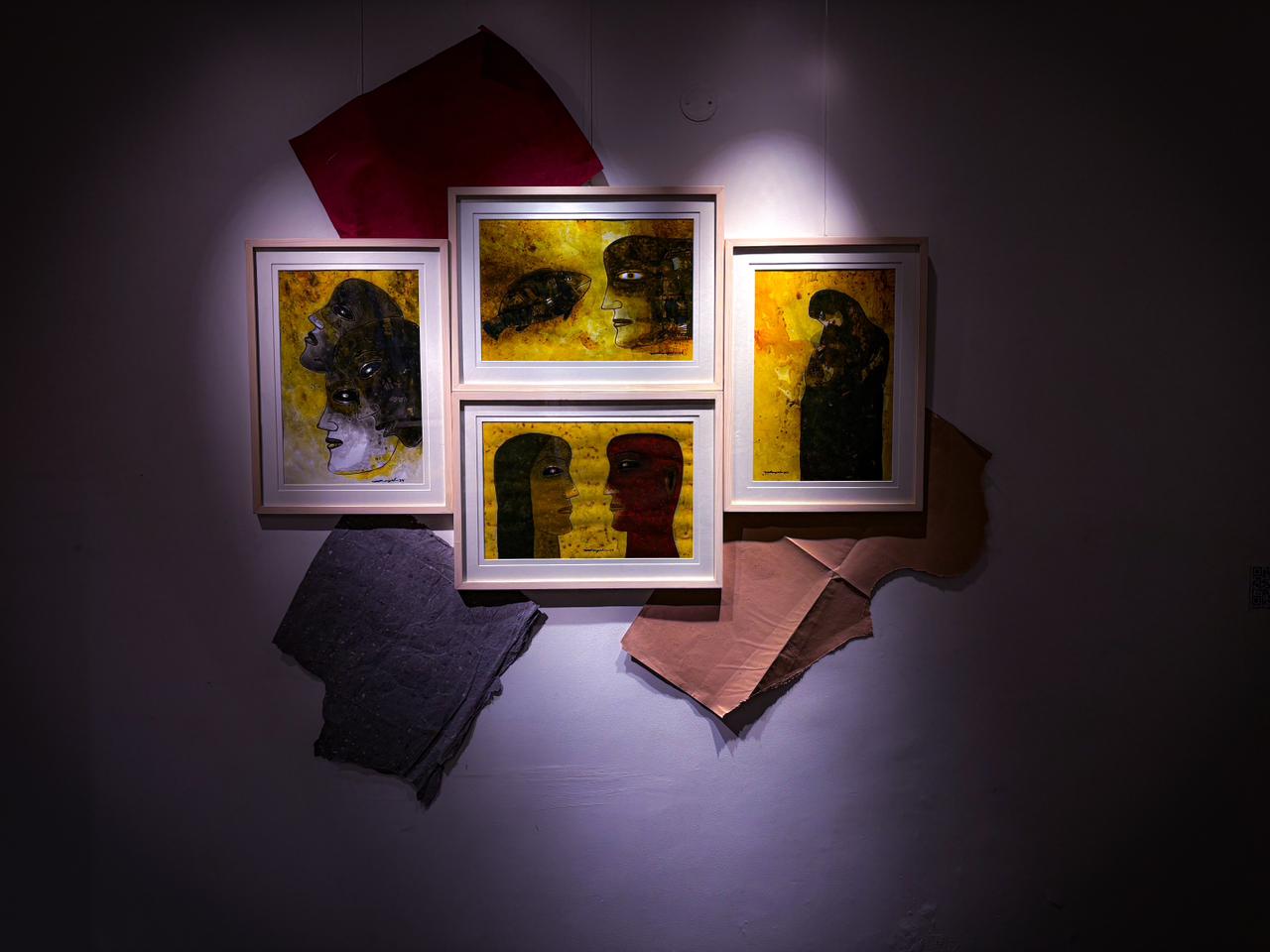
The hallways open up to a series of three intriguing paintings that look, at a glance, like revelations from a dream. Kayal’s experimentations with images of the Indian woman through symbolizations of the Body, Fish, and Duck take on new dimensions in these fascinating pieces. His subjects seem to converse, sometimes so entwined within the bodies of another that their figures fuse into one, and at other times within the browning skies of hushed colloquy.
Our eyes then find an intricate reflection upon portraits of the human condition. The blues stare straight ahead as the browns and reds look away in sheltering warmth. When the colors collide, they shape into Man and Bird negotiating flight and familiarity. Kayal stuns us once again, in a portrayal of the rawest human self that challenges our theoretic conventions of color and meaning.

Mihir Kayal talks of painting as though it were a language, one that must be felt and understood to experience in totality. All at once, however, he speaks about the universality of the painted figure, and its ability to transcend the borders laid out by geopolitics and linguistic disparity. He mentions time and again, his abhorrence of artistic conjecture. Art, he insists, must be sensed within one’s being. Art, he reiterates, cannot be academic theory.
Led then to a study of ducks through scenes of intimate mundanity, we find expressions of love, loss, and disarray. The birds engage with one another’s bodies, they quarrel, they fall back. In depictions that seem like fading memories put to paper, the artist manages to strike a chord of pining familiarity. A lone duck seems to call out in silent desperation. The bird, through Kayal’s artistry, sheds its binds of nomenclature and shifts effortlessly into the realms of artistic metaphor.
Mihir Kayal’s explorations of life take shape within frames that encompass flowers of blue and red that rest in browning pots. Some of them sit poised in white, while others branch out in chaotic fervor.
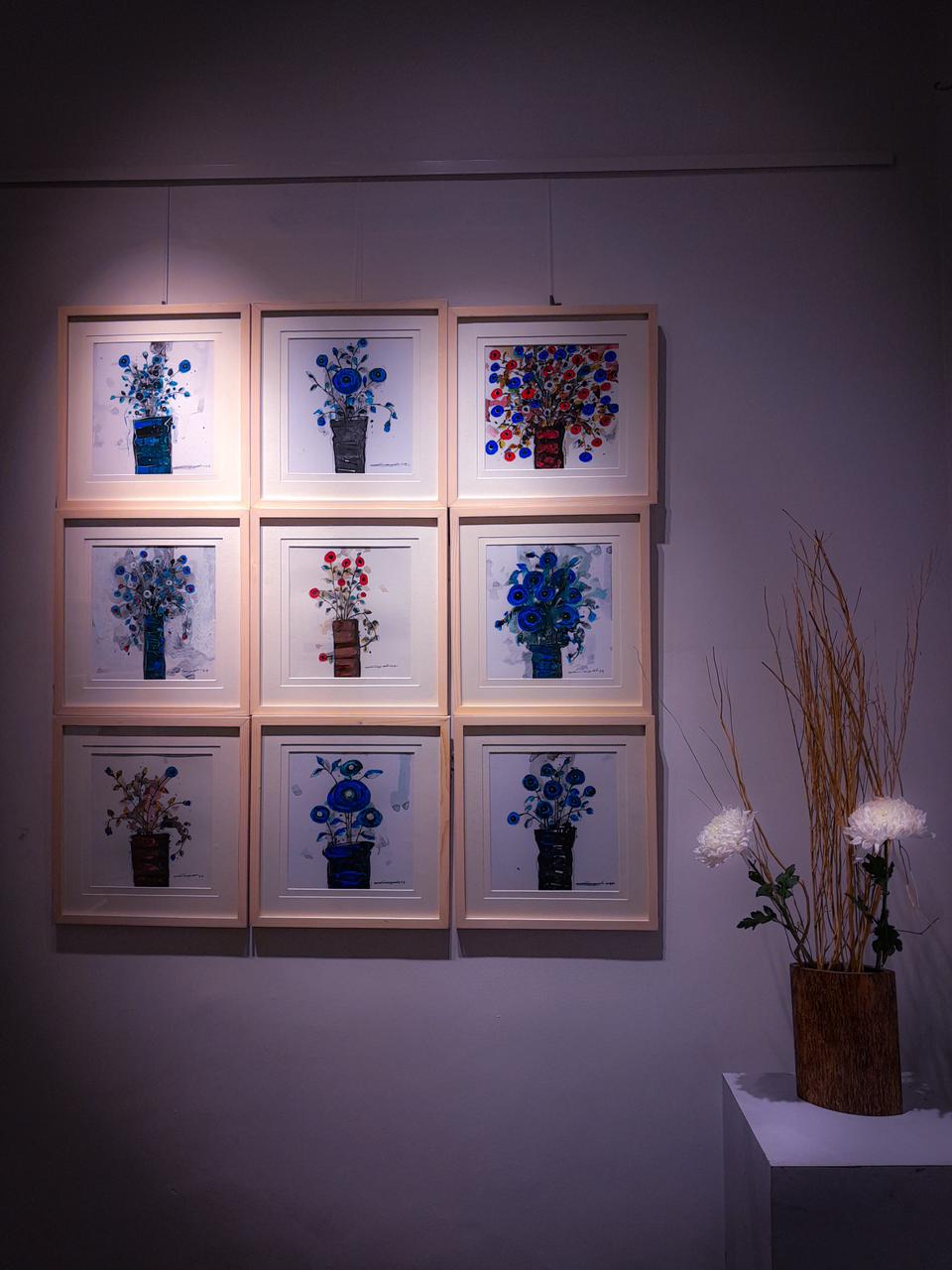
As the artist leads us through an array of social landscapes, he laments out loud the strife for ‘meaning’ in artistic discourse. He questions how something as personal and experiential as the painted canvas can be limited by a thing as banal as definition. He posits his work as the result of worldly suffering, born from the lives that persist all around. Kayal talks then of a belief that his art is driven by some greater force- an artistic higher power- that tasks him with inspiration and sees his work come to fruition. He paints into the aging night and hopes each work of art will find its story. He feels wonder at how his paintings turn out. The artistry that meets the spectator’s gaze keeps its promise and speaks for itself.
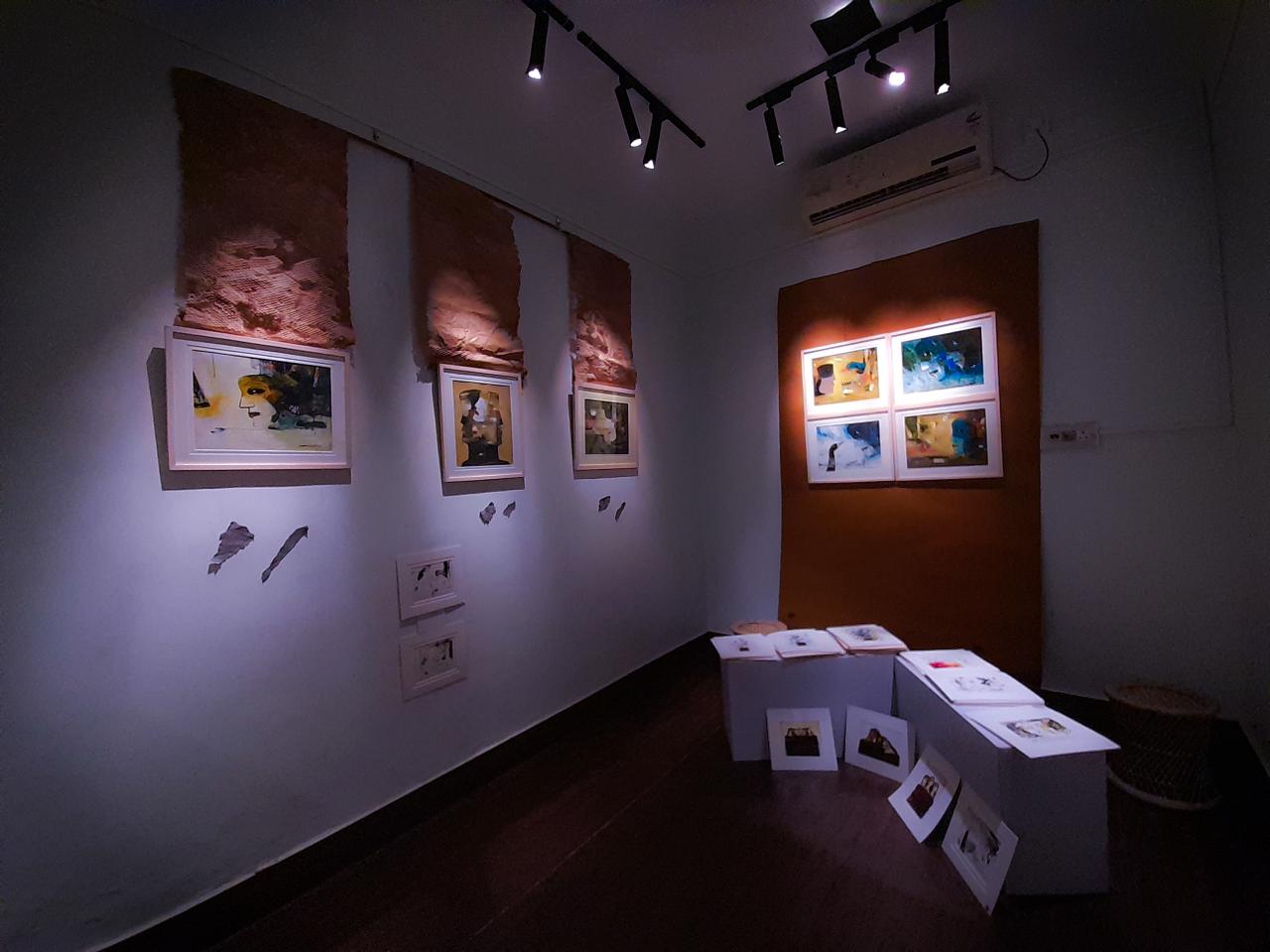
Our notice then befalls a string of human figures that blend into one another as faces born of them appear to fade into the hues. The Duck appears again and stands out in determined darkness against an overwhelming blue.
The human psyche is explored in a piece that rests in solitude, where a single obstinate neck holds on to the many personas of a single soul. A striking composition that manifests in acrylic on paper, it implores us to embark on an introspective journey that seeks to uncover the pluralities inherent to our very beings.
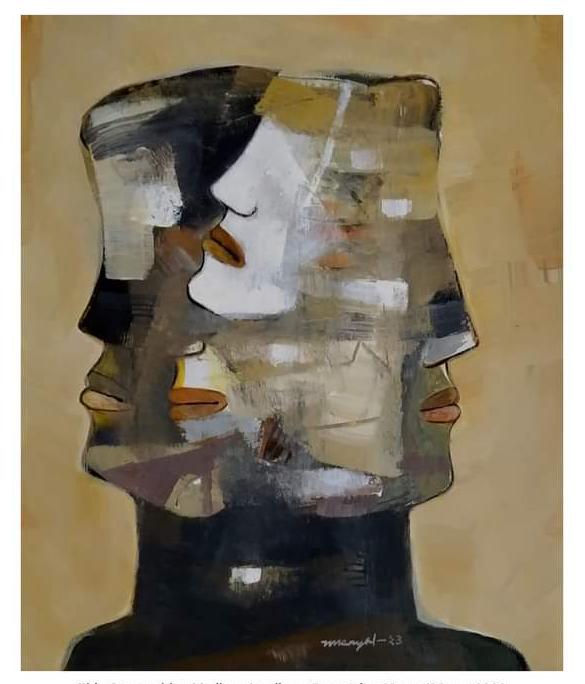
Another painting that demands notice is embodied by a lonesome duck that looks away in reticent solitude. The body of this duck is painted in a black reminiscent of some faraway river that rages on through the night, while the face is set in a stony grey, the pensive eyes downturned, the beak resolutely shut. The piece comes alive in its browning yellows that house an entire community of fish within the body, and the single twine of creeping leaves that takes form against the posture of the duck.
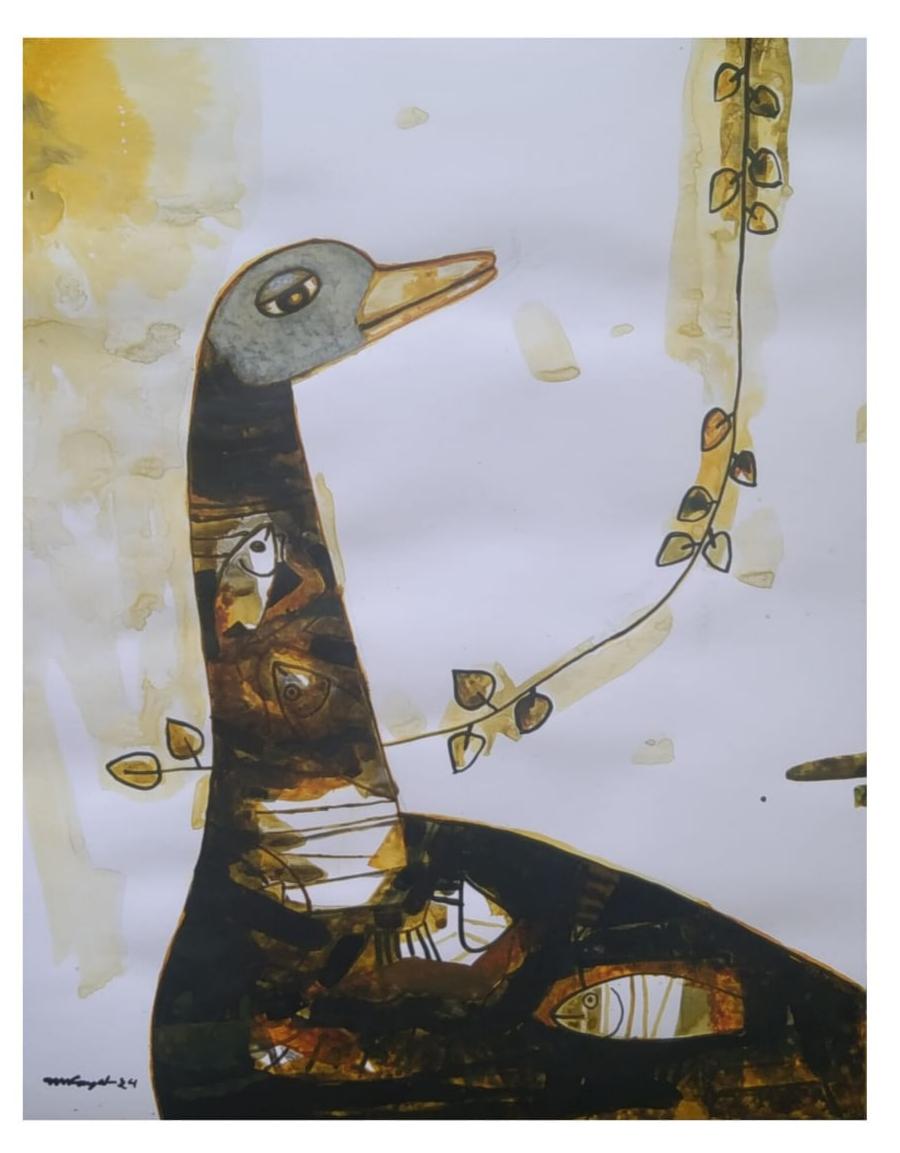
A piece of art, Kayal says, comes from the bare bones of an idea. The artist persists, conceives, negotiates, and a story is born. This is a story born from the lands around him, his sceneries of comfort, the pangs of devastation. This is a story that reforms itself each time that a spectator gazes upon a frame and is transformed into a storyteller.
Kayal, through this exhibition, explores freedom and domesticity, personhood and collectivity. Each stroke of the brush sings of the complexities embedded within the day-to-day but maintains the strange quality of a vision slowly slipping into the fabric of lived reality. He manages to weave into his artistic vision, the multitudes of existences as experienced by this diverse country; radicalizing minimalism while subverting all our notions of the physical world we inhabit. Only a mind as astounding as Mihir Kayal’s would be able to bring to life this magnificent synthesis of the Public and the Personal. The Artist speaks in Three Colors, of life in its most primal sensitivities. The self seeps into the world and gazes at memory with childlike ardor. Life rushes in, unabashed, unfettered, through Kayal’s acrylic contemplations. The pieces interact and engage with the heart, while the stories within them evolve.
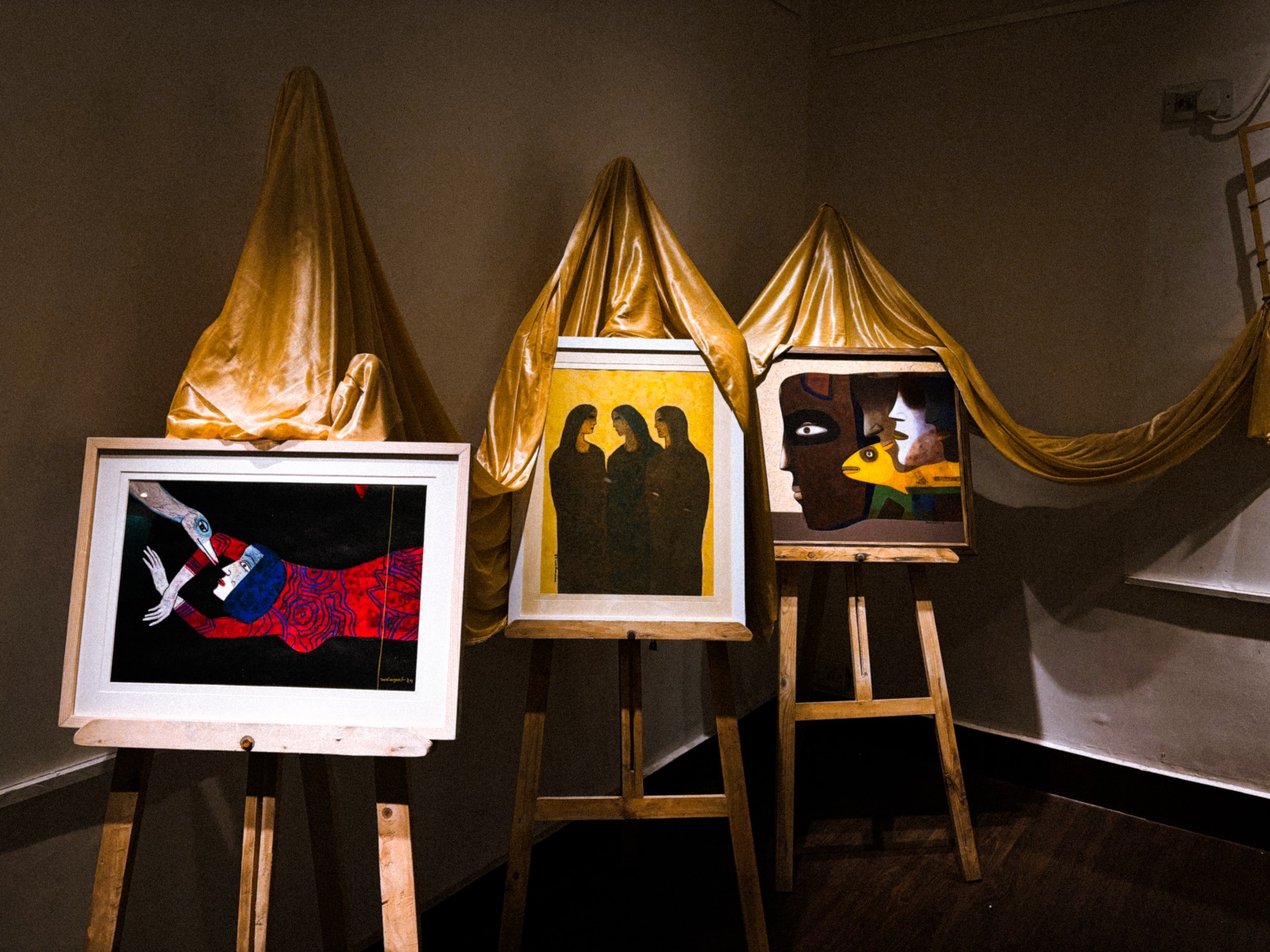
The Chhobi-O-Ghor Art Gallery (16 Lake Temple Road, Kolkata – 700029) offers Calcuttans slowly stepping away from wintery languor, an inimitable journey through life’s surest vulnerabilities. You will find love in these paintings if you look for it, and you will find sorrow, looming still. You may find them together, all at once, or at throes with the ravages of time. You may find a life you have never known, or grasp a dream that has slipped away.

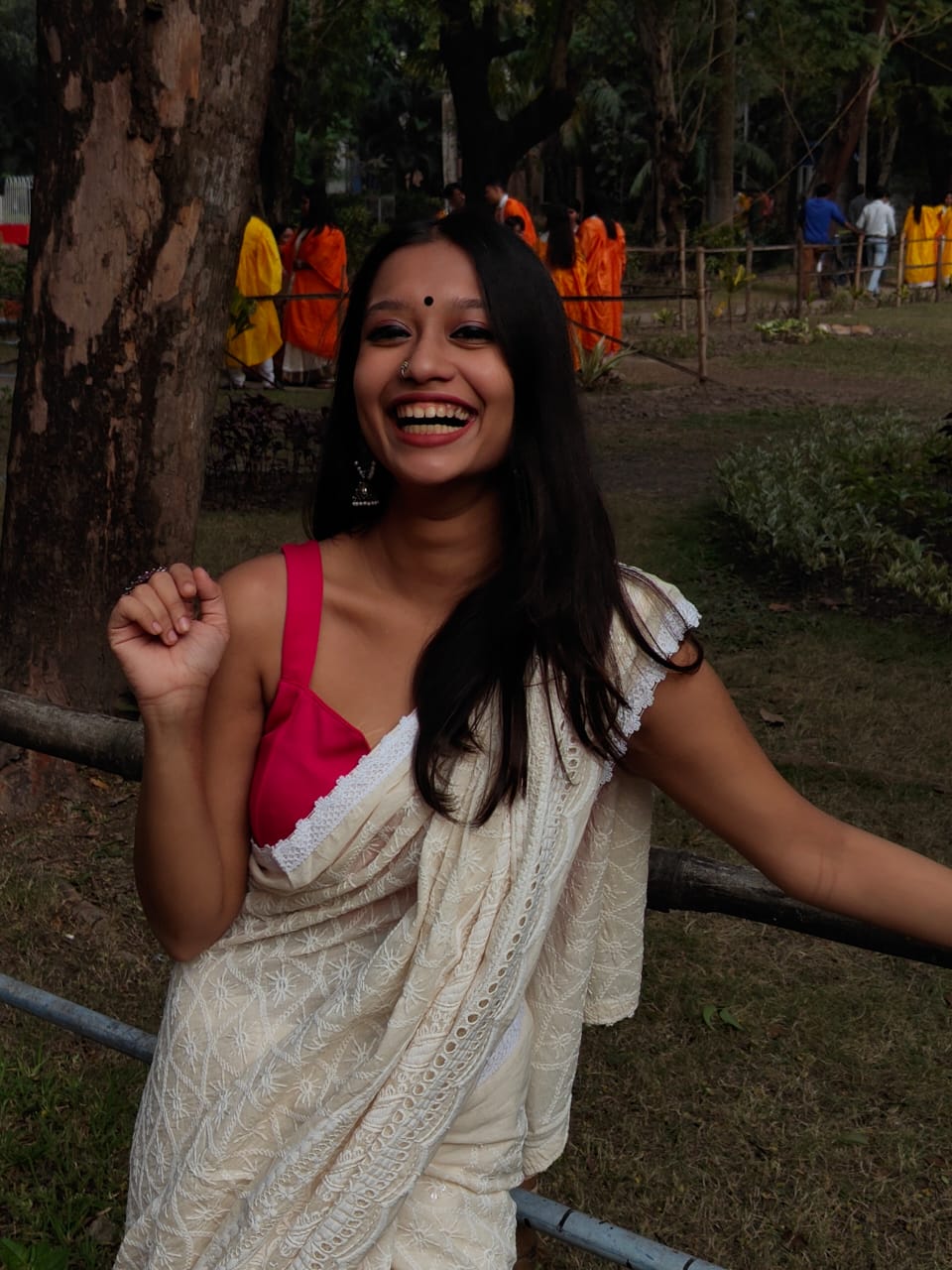

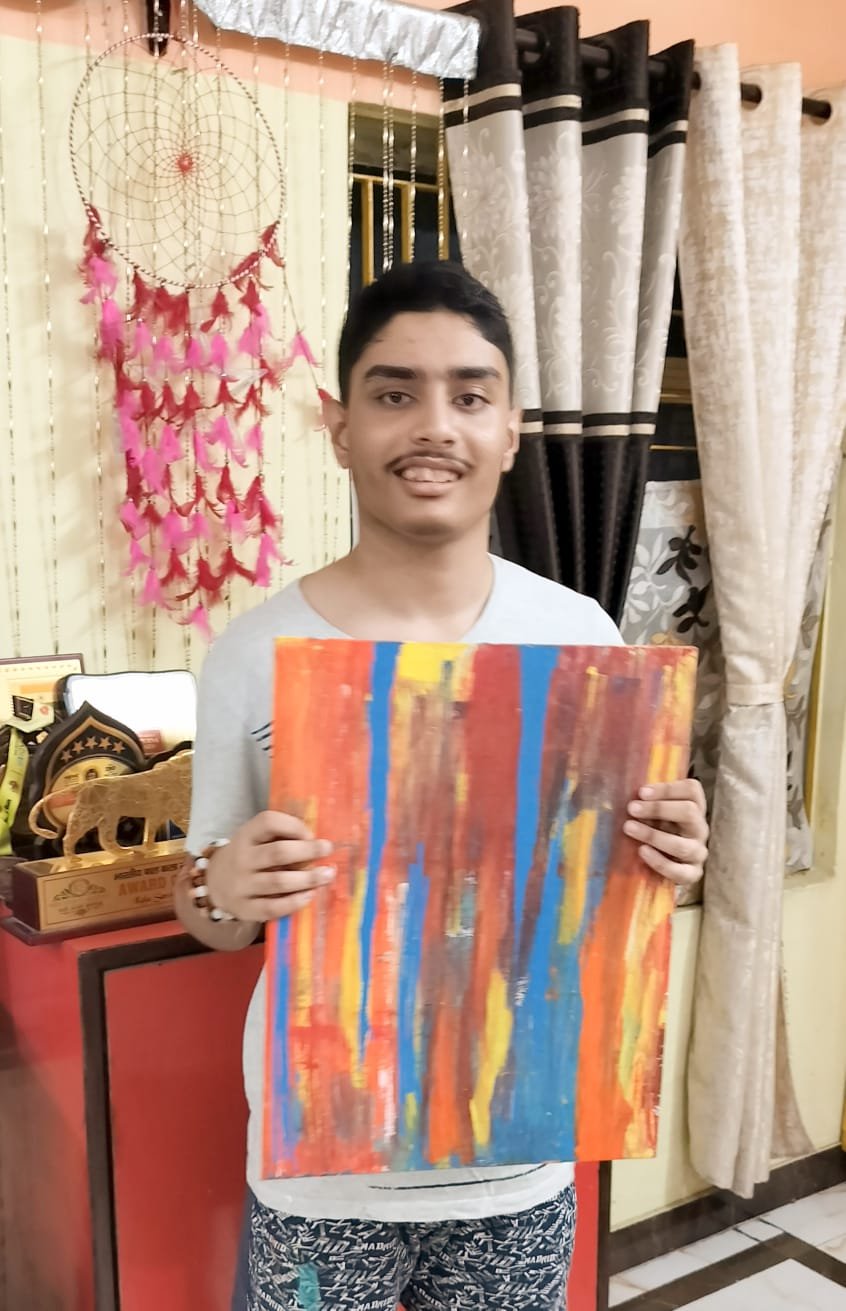

5 Responses
Here, the artist paits the drems excellently.
Here, the artist panits the drems excellently.
What a lovely report on what seems to be a really really impressive exhibition!
Thank you Sayantan da for your response and recommendation.
The beautiful review actually inspires to see and understand kayals work. If we get a preview instead of review then it might make us visit the gallery to experience it.